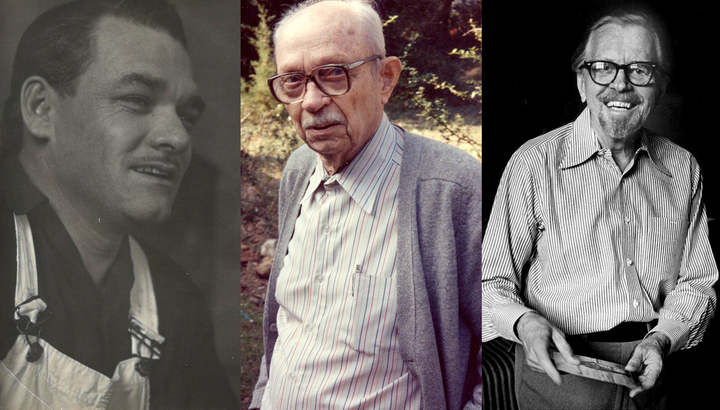The Carter Blog
Carter ARTicles
Ask a Curator Day ... redux!
Sep 17, 2021
The 11th annual Ask a Curator Day was on September 15. The Carter’s Curator of Paintings, Sculpture, and Works on Paper, Maggie Adler, fielded questions from around the country and even the globe! Maggie had such a great time answering questions and we weren’t able to answer all of them online, so we decided to share some favorites here.
Q: Of all the paintings at the Carter, which would you most like to have:
- above your fireplace (assuming you have one)?
- above your living room couch?
- in your bedroom?
MA: Oh, this is cool! So, I have a mirror above my fireplace. Fireplaces are a little dangerous for art with their soot and smoke. And my couch is in the middle of my living room with no art above it. But, in the spirit of your question, I tend to be drawn to work that is not part of my everyday research and expertise. My personal collection includes paintings by friends who are not necessarily from the United States and a lot of photography that captures the world from unusual angles. There are certainly works at the Carter that I could never get tired of looking at, which is the main reason for putting them up at home. Let’s say Gabriel Dawe’s Plexus no. 34 (dangerous with cats), a drawing by John Haberle of the artist’s left hand, John Quincy Adams Ward’s The Freedman (poetry in bronze), and, as a former competitive archer myself, Augustus Saint-Gaudens’ Diana.
Maggie's artwork picks
-
Gabriel Dawe
Plexus no. 34, 2016Gütermann thread, painted wood, hooks
2018.113

-
John Haberle
Haberle's Left Hand, 1882Graphite on paper
1985.286

Maggie's picks 2
-
John Quincy Adams Ward
The Freedman, 1863Bronze
2000.15

-
Augustus Saint-Gaudens
Diana, ca. 1894Cement and plaster
1981.67

Q: How does a curator find rising artists who show potential and possibly incorporate them into an exhibition? Is there a “curator network” for exchange of ideas as well as introductions to rising artists?
MA: Curators are pretty great about getting out and about with word of mouth or recommendations from other artists or curators, going to art fairs, or seeking advice from dealers. I will tell you that a lot of artists contact me on LinkedIn and I rarely follow up with things I see there, so for me that’s not really a productive channel.
Try to get your work into public places so curators will see it as they are out in the world (even if it’s a coffee shop or a bakery!). If you have friends who are artists already showing places, have them put in a plug. My next collaboration is with an artist who met our director at an opening at another museum for another artist friend and handed him a card. Sandy [Rodriguez] is awesome and, when I visited her website, it was love at first sight. So, sometimes it’s just about meeting someone who knows us and making a personal connection.
Also, curators have their own tastes and preoccupations. Don’t lose hope if I’m not the curator for you—try another! I am particularly interested in contemporary art that fits the theme of something historical but with a current-event slant. You might be an awesome abstract painter, but that might not be my thing—it's not personal!
Q: When you're curating an exhibition, are there times when you have finally selected all the artworks, but you had to edit out some artworks for various reasons and those not selected still really had an impact on you?
MA: Absolutely! Sometimes a loan falls through at the last minute and I get a bit heartbroken. You, as a visitor, probably will never notice that the show could have been enhanced by one more work, but I’ll always know that it was missing! Other times, something sticks out in a bad way and I’m not disappointed to leave it out.
Q: What inspired you to become a curator?
MA: This is not my first career, but it is definitely the right one for me. I used to be in marketing and education and fundraising. I got a job raising money for a museum, Addison Gallery of American Art, and met a bunch of artists who inspired me. I thought that I’d like to be able to connect people to history and encourage artists to make new work, and so I went back to school and have been working in curatorial ever since. I love seeing art come to life—either new work or helping people gain understanding of something they’d never know about.
Q: Zombies attack. Which museum object do you use to fight them?
MA: Well, I think I’d use a slower curator as bait and run as fast as I can out of the Museum without damaging any artwork in the process. Maybe I take my office stapler with me for protection?












